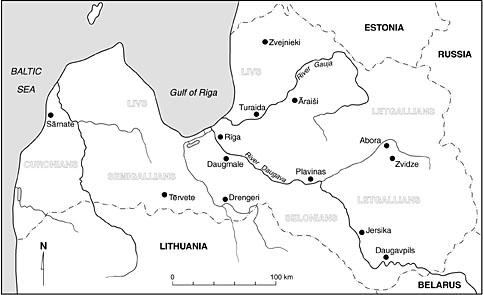

 | Page 794 |  |
nineteenth century to the founding of the independent republic of Latvia in 1918, belongs to the Baltic Germans. The second period was an important short-term period that included the foundation of the national school of archaeologists and the appearance of the works of the first generation of Latvian archaeologists in independent Latvia (1918–1940). The third period was that of a new political regime—the Soviet occupation—when a new generation of archaeologists appeared who continued the traditions and skills of the first generation of Latvian archaeologists (1940–1941; 1945–1990). The fourth period was the time of an independent development of Latvian archaeology at an international level (1990–present).

Latvian Archaeological Sites
The first period of the history of archaeology in Latvia—the Baltic German period—can be divided into three phases. Well-known amateur archaeologists of the first phase during the nineteenth century were Friedrich Kruse, who published Necrolvonica oder Alterthumer Liv-, Esth- und Curland in Dorpat (Tartu 1842) and K.K. Bahr, who described the graves of Livs in Die Graber der Liven (Dresden 1850). Local antiquarian Carl Sievers (1814–1879) carried out the first amateur excavations of the Stone Age settlements in Zvejnieki and Rinnukalns between 1874 and 1875. The first systematic classification of Stone Age artifacts was elaborated by professor C. Grewingk (1819–1887) in Dorpat, Tartu province (1865, 1874, 1887). The further subdivision of the first period of the history of archaeology in Latvia was determined by the fact that Russian archaeologists joined the investigation of the Baltic provinces, along with the Baltic German amateurs and specialists, before preparing for the Tenth All-Russian Archaeological Congress in Rīga in 1896. During the second short phase Baltic German archaeologists and Russian archaeologists organized excavations. The most significant excavations were carried out by Russian specialist J. Romanov in the Lettgallian cemetery of the tenth through the twelfth centuries at Odukalns and cremations of the Curonians of the eleventh through the fourteenth centuries in Western Latvia at Pasilciems. These scientific investigations matched the scale of those in the 1890s. N. Haruzin published a report about the archaeology inside the Baltic provinces of Russia, including Estland, Livland, and Curland, which contained many criticisms about the methodology of investigations by Baltic German amateurs (Haruzin 1894). The
 |  |